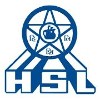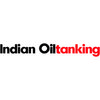Fire & Safety Officer
100+ Fire & Safety Officer Interview Questions and Answers

Asked in Jio

Q. What type of PPE are you using in your current organization?
In my current organization, I use a variety of PPE to ensure safety.
I use fire-resistant clothing to protect against heat and flames.
I wear safety helmets to protect my head from falling objects.
I use safety goggles to protect my eyes from dust, debris, and chemicals.
I wear gloves to protect my hands from cuts, burns, and chemical exposure.
I use respiratory masks to protect against inhalation of harmful gases or particles.

Asked in Jio

Q. What is the definition of CORONA?
Corona refers to a group of viruses that cause illnesses ranging from the common cold to more severe diseases such as Middle East Respiratory Syndrome (MERS) and Severe Acute Respiratory Syndrome (SARS).
Corona is a group of viruses.
It can cause illnesses like the common cold, MERS, and SARS.
Coronaviruses are zoonotic, meaning they are transmitted between animals and people.
The current global pandemic is caused by a novel coronavirus called SARS-CoV-2.
Fire & Safety Officer Interview Questions and Answers for Freshers

Asked in Jio

Q. Which class of electrical hand gloves do you use in your organization?
We use Class 0 and Class 2 electrical hand gloves in our organisation.
Class 0 gloves are used for maximum voltage of 1000V AC and 1500V DC.
Class 2 gloves are used for maximum voltage of 17000V AC and 25000V DC.
We ensure that the gloves are tested and certified before use.
We also provide training to our employees on the proper use and care of the gloves.

Asked in DLF

Q. Can you explain the different types of work permit systems?
A work permit system is a set of procedures and documents used to control and manage hazardous work activities.
Hot work permit: Used for activities involving open flames or high temperatures, such as welding or cutting.
Confined space permit: Required for work in confined spaces with limited entry and exit points, such as tanks or tunnels.
Electrical work permit: Used for electrical maintenance or repair work to ensure safety precautions are followed.
Excavation permit: Required...read more

Asked in Jio

Q. What are intrinsic electrical safety devices?
Intrinsic electrical safety devices are designed to prevent electrical hazards in hazardous environments.
Intrinsic safety barriers
Intrinsic safety isolators
Intrinsic safety relays
Intrinsic safety switches
Intrinsic safety transformers
Intrinsic safety fuses

Asked in GAIL

Q. Q OISD Q. Types of detectors Q. Operation of system actuation Q types of hospital fire hazards Q occupancy type of hospital Q risers Q example of metal fire Q pump Q work permit Q electrical safety Q material s...
read moreTypes of detectors include smoke detectors, heat detectors, flame detectors, and gas detectors.
Smoke detectors detect smoke particles in the air.
Heat detectors sense increases in temperature.
Flame detectors detect the presence of flames.
Gas detectors monitor the levels of specific gases in the environment.
Fire & Safety Officer Jobs




Asked in Jio

Q. What are the elements of safety management?
The elements of safety management include planning, organizing, leading, controlling, and evaluating.
Planning involves identifying potential hazards and developing strategies to mitigate them.
Organizing involves assigning responsibilities and resources to ensure safety measures are implemented.
Leading involves promoting a safety culture and providing training and education to employees.
Controlling involves monitoring and enforcing safety policies and procedures.
Evaluating inv...read more

Asked in Jio

Q. What do you mean by Incident Management?
Incident management refers to the process of identifying, analyzing, and responding to incidents in a timely and effective manner.
It involves developing and implementing plans and procedures for responding to emergencies and other incidents.
It includes assessing the situation, determining the appropriate response, and coordinating with other stakeholders.
Examples include responding to fires, natural disasters, hazardous material spills, and workplace accidents.
Effective incid...read more
Share interview questions and help millions of jobseekers 🌟


Asked in Jio

Q. Which standard full body harness do you use?
We use ANSI/ASSE Z359.11-2014 standard full body harness.
We prioritize safety and use harnesses that meet the ANSI/ASSE Z359.11-2014 standard.
This standard ensures that the harnesses are tested and certified to meet safety requirements.
We also ensure that the harnesses fit properly and are regularly inspected for wear and tear.
Examples of harnesses that meet this standard include the DBI-SALA ExoFit NEX and the Miller Revolution Harness.

Asked in Metro Group of Hospitals

Q. Prevention of fire, pressure testing and standard of hyadant line pressure in pump room. About of mock drills.
Prevention of fire includes regular pressure testing of hydrant lines in pump rooms and conducting mock drills for emergency preparedness.
Regularly inspect and maintain hydrant lines to ensure they meet standard pressure requirements
Conduct pressure testing of hydrant lines to identify any leaks or weaknesses
Ensure pump rooms are equipped with proper fire suppression systems and equipment
Organize mock drills to train personnel on emergency response procedures and evacuation p...read more
Asked in Gogula Constructions

Q. Why do we enforce the use of safety belts at heights in construction? What are the potential consequences of not wearing one?
Safety belts are enforced in construction at height to prevent falls and reduce the risk of serious injuries or fatalities.
Safety belts provide a means of restraint and protection for workers working at heights.
They help to prevent falls and reduce the impact of falls by distributing the force of the fall across the body.
Safety belts are designed to be securely attached to a fixed anchor point, such as a harness or a lifeline.
They allow workers to have both hands free to perf...read more

Asked in Jio

Q. What do you mean by safety management?
Safety management refers to the process of identifying, assessing, and controlling hazards to prevent accidents and injuries.
Safety management involves developing and implementing policies and procedures to ensure a safe working environment.
It includes conducting risk assessments, identifying potential hazards, and implementing controls to mitigate risks.
Safety management also involves training employees on safe work practices and ensuring compliance with safety regulations.
E...read more

Asked in JLL

Q. What is your understanding of fire extinguishers and the emergency response plan?
Fire extinguishers are devices used to control or extinguish small fires, while an emergency response plan outlines procedures to follow in case of a fire emergency.
Fire extinguishers come in different types, such as water, foam, CO2, and dry chemical, each suitable for different types of fires.
Emergency response plans typically include evacuation procedures, designated meeting points, and contact information for emergency services.
It is important to regularly inspect and mai...read more

Asked in Hindustan Shipyard

Q. Do you know what the duties of a safety officer are?
A safety officer ensures workplace safety by implementing policies, conducting inspections, and promoting safety awareness.
Conduct regular safety inspections to identify hazards, e.g., checking fire extinguishers and emergency exits.
Develop and implement safety policies and procedures, such as emergency response plans.
Provide safety training and education to employees, e.g., fire drills and proper equipment usage.
Investigate accidents and incidents to determine causes and pre...read more

Asked in GEM Hospital And Research Center

Q. What are the duties and responsibilities of a fire safety officer in a hospital?
A fire safety officer in a hospital ensures fire prevention, safety compliance, and emergency preparedness to protect patients and staff.
Conduct regular fire risk assessments to identify potential hazards.
Develop and implement fire safety policies and procedures tailored to hospital operations.
Organize and conduct fire drills to ensure staff are trained in emergency evacuation protocols.
Maintain and inspect fire safety equipment, such as extinguishers and alarms, ensuring the...read more

Asked in GEM Hospital And Research Center

Q. What are the responsibilities of all staff members when activating the MCP in a hospital?
Staff must follow protocols to ensure safety during emergencies when the MCP is activated in a hospital.
Immediately notify the emergency response team and provide details of the situation.
Follow the established evacuation routes and assist patients and visitors in evacuating safely.
Ensure that all equipment and hazardous materials are secured to prevent further risks.
Communicate clearly with colleagues and maintain a calm environment to avoid panic.
Document the incident and a...read more

Asked in GEM Hospital And Research Center

Q. What is the protocol for staff response during a Code Red activation in a hospital?
Code Red in hospitals indicates a fire emergency; staff must follow specific protocols to ensure safety.
Immediately activate the fire alarm system if not already done.
Evacuate patients and staff from the affected area using designated routes.
Close doors behind you to contain the fire and smoke.
Report the fire's location to the emergency response team.
Follow the instructions of the fire response team and do not use elevators.

Asked in GEM Hospital And Research Center

Q. What is the role of the emergency response team (ERT) in a hospital?
The ERT in a hospital ensures rapid response to emergencies, safeguarding patients and staff through coordinated actions.
Conducts drills and training for staff on emergency protocols.
Responds to medical emergencies, such as cardiac arrests, using advanced life support techniques.
Manages hazardous material spills to prevent contamination and ensure safety.
Coordinates with local emergency services during large-scale incidents, like natural disasters.
Provides immediate support d...read more

Asked in GEM Hospital And Research Center

Q. What is the role of preventive maintenance in a fire department?
Preventive maintenance ensures fire safety equipment is functional, reducing risks and enhancing response effectiveness.
Regular inspections of fire extinguishers to ensure they are charged and accessible.
Scheduled testing of fire alarms and sprinkler systems to confirm they operate correctly.
Routine maintenance of fire trucks and equipment to prevent breakdowns during emergencies.
Training drills for personnel to ensure readiness and familiarity with equipment and procedures.

Asked in Slr Metaliks

Q. What types of fire extinguishers are there?
There are different types of fire extinguishers for different types of fires, such as water, foam, CO2, dry powder, and wet chemical.
Water fire extinguishers are suitable for Class A fires involving solid materials like wood, paper, and textiles.
Foam fire extinguishers are effective for Class A and B fires, which involve flammable liquids like petrol and oil.
CO2 fire extinguishers are used for Class B and electrical fires, as they do not leave any residue.
Dry powder fire exti...read more

Asked in JSW Steel

Q. Which departments are involved in a fire mock drill, and what are their responsibilities?
Fire mock drills are conducted by the Fire Department to ensure preparedness in case of emergencies.
Fire Department is responsible for conducting fire mock drills
Responsibilities include planning, coordinating, and executing mock drills
Ensuring all staff are trained on evacuation procedures
Testing fire alarms, emergency exits, and firefighting equipment
Analyzing the effectiveness of the drill and making improvements as needed

Asked in JSW Steel

Q. Which fire detection system is used in cinema theaters?
The fire detection system used in cinema theatres is typically a combination of smoke detectors, heat detectors, and manual call points.
Smoke detectors are commonly used to detect smoke particles in the air, triggering an alarm when smoke is present.
Heat detectors are used to sense a rapid rise in temperature, indicating a fire.
Manual call points allow individuals to manually trigger the alarm in case of emergency.
Some cinema theatres may also have fire alarm control panels t...read more

Asked in JLL

Q. Managing safety procedures at site. Supervising first aid precaution. Conducting fire & safety meetings. Fire mock drills. Conduct the fire prevention and Fire Fighting training. Evacuation procedures training....
read moreManaging safety procedures, first aid, fire drills, training, and evacuation procedures at site.
Regularly review and update safety procedures to ensure compliance with regulations and best practices.
Supervise first aid precautions by ensuring proper training for staff and maintaining first aid kits.
Conduct regular fire and safety meetings to discuss any issues or updates.
Organize fire mock drills to test the effectiveness of emergency response plans.
Provide fire prevention an...read more
Asked in Rudras Interior Point

Q. What is the difference between a Manual Call Point (MCP) and a detector in a fire alarm system?
MCPs are manual activation devices, while detectors automatically sense fire conditions.
MCPs require human intervention to activate the alarm, e.g., pressing a button.
Detectors automatically sense smoke, heat, or gas, e.g., smoke detectors trigger alarms without manual input.
MCPs are typically located near exits for easy access, while detectors are placed throughout a building for comprehensive coverage.
Examples of MCPs include break glass units, while examples of detectors i...read more

Asked in GEM Hospital And Research Center

Q. What are the procedures for managing an oil fire that may occur in a hospital?
Effective management of oil fires in hospitals involves prevention, immediate response, and evacuation protocols.
Identify potential sources of oil fires, such as kitchens and maintenance areas.
Ensure proper storage of flammable materials away from ignition sources.
Train staff in the use of fire extinguishers, specifically Class K for kitchen oil fires.
Activate the fire alarm system immediately upon detection of an oil fire.
Evacuate patients and staff from the affected area, f...read more

Asked in IndianOil Adani Ventures

Q. What is risk and risk solution?
Risk is the potential for harm or loss, while risk solution involves identifying, assessing, and implementing measures to mitigate or eliminate risks.
Risk is the likelihood of a negative event occurring, such as accidents, injuries, or financial losses.
Risk solution involves identifying potential risks, assessing their impact, and implementing measures to reduce or eliminate them.
Examples of risk solutions include implementing safety protocols, providing training to employees...read more

Asked in GEM Hospital And Research Center

Q. What are the firefighting protocols established in hospitals?
Hospitals follow strict firefighting protocols to ensure safety and minimize risks during a fire emergency.
Regular fire drills are conducted to train staff on evacuation procedures.
Fire alarms and suppression systems are installed throughout the facility.
Clear signage indicates emergency exits and fire equipment locations.
Staff are trained in the use of fire extinguishers and emergency response.
Specific protocols are in place for high-risk areas, such as operating rooms and s...read more

Asked in GEM Hospital And Research Center

Q. What type of fire extinguisher is utilized in hospitals?
Hospitals primarily use water, foam, CO2, and dry chemical extinguishers for various fire risks.
Water extinguishers are suitable for Class A fires (e.g., paper, wood).
Foam extinguishers are effective for Class B fires (flammable liquids).
CO2 extinguishers are ideal for electrical fires and Class B fires.
Dry chemical extinguishers can tackle Class A, B, and C fires (flammable gases).
Hospitals may also use specialized extinguishers for specific risks, like halon for sensitive e...read more

Asked in Medanta the Medicity

Q. What is the difference between a pressure gauge and a pressure switch?
Pressure gauge measures pressure while pressure switch controls the pressure.
Pressure gauge is a measuring device while pressure switch is a control device.
Pressure gauge indicates the pressure level while pressure switch turns on/off a device based on pressure level.
Pressure gauge is used to monitor pressure in a system while pressure switch is used to control the pressure in a system.
Examples of pressure gauges include Bourdon tube gauge, diaphragm gauge, and capsule gauge ...read more
Asked in Rudras Interior Point

Q. What is the fire triangle, and what are its components?
The fire triangle illustrates the three essential elements needed for fire: heat, fuel, and oxygen.
Heat: The energy source that raises the material to its ignition temperature. Example: Sparks from a welding machine.
Fuel: Any combustible material that can burn. Example: Wood, paper, or gasoline.
Oxygen: A gas that supports combustion, typically from the air. Example: The atmosphere contains about 21% oxygen.
Interview Experiences of Popular Companies






Calculate your in-hand salary
Confused about how your in-hand salary is calculated? Enter your annual salary (CTC) and get your in-hand salary


Reviews
Interviews
Salaries
Users










